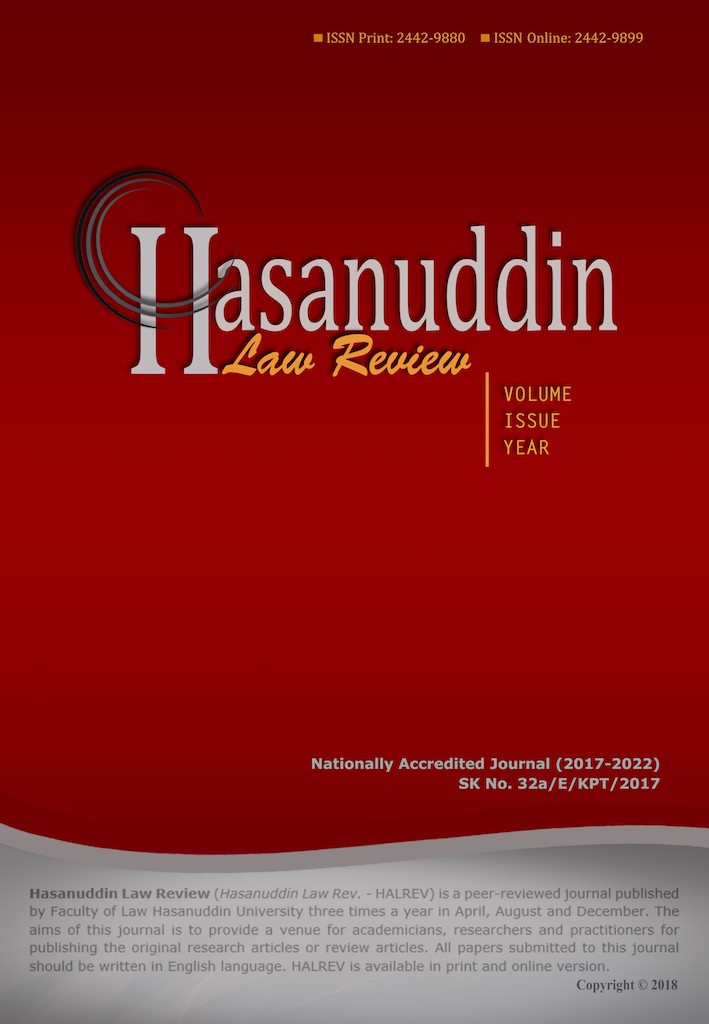Abstract
The spirit of implementing decentralization and special autonomy contains the principle of federal arrangements is the right solution in the Indonesian government system. A unitary state in the form of a Republic with social conditions, multicultural society, and geographical conditions with thousands of islands is a challenge in realizing prosperity. This article is normative-legal research. The data used are primary legal materials obtained from relevant regulations and secondary legal materials obtained from various related literatures. The result shows that implementing the principle of the reserve of powers was to the region and direct election system for regional heads and deputy regional heads. Meanwhile, decentralization which leads to a federal system, has positive and negative effects on the implementation of the functions and objectives of the state, stated in the spirit of special autonomy. Both de facto and de jure, this legal policy reflects the principle of the federal system, which aims to maintain the integrity of the Unitary State of the Republic of Indonesia.
References
Adinagoro, Budi Kasan Besari. "Restructurisation Special Autonomy Policy the Province of Equity Papua According To Indonesian Constitution." In Proceeding International Conference on Law, Economy, Social and Sharia (ICLESS), vol. 1, no. 1, pp. 199-210. 2022.
Bauw, Lily. "Special Autonomy of Papua: A Review from the Perspective of the Unitary State of the Republic of Indonesia." Papua Law Journal 1, no. 1 (2018): 1-26.
Bertrand, Jacques. "Indonesia's quasi-federalist approach: Accommodation amid strong integrationist tendencies." International Journal of Constitutional Law 5, no. 4 (2007): 576-605.
Bhakti, Ikrar Nusa and Irine H. Gayatri (eds), Kontroversi Negara Federal: Mencari Bentuk Negara Ideal Indonesia Masa Depan, Bandung: Mizan Media Utama, 2002.
Hendratno, Edie Toet. “Desentralisasi yang Mengarah ke Sistem Federal dan Pengaruhnya Terhadap Pelaksanaan Fungsi Negara.†Indonesian J. Int'l L. 4 (2006): 319.
Mehrotra, Santosh. "Governance and basic social services: ensuring accountability in service delivery through deep democratic decentralization." Journal of International Development: The Journal of the Development Studies Association 18, no. 2 (2006): 263-283.
Peer, Gazala, and Javedur Rahman. "An unpleasant autonomy: Revisiting the special status for Jammu and Kashmir." Economic and Political Weekly (2012): 72-75.
Rahmatunnisa, Mudiyati, Reginawanti Hindersah, and Tri Hanggono Achmad. "Why Regions with Archipelagic Characteristics in Indonesia Also Need Asymmetric Decentralization?" Jurnal Bina Praja: Journal of Home Affairs Governance 10, no. 2 (2018): 251-261.
Rolnik, Raquel. "Democracy on the edge: Limits and possibilities in the implementation of an urban reform agenda in Brazil." International Journal of Urban and Regional Research 35, no. 2 (2011): 239-255.
Sung, Ming-Hsi, and Hary Abdul Hakim. "Unitary, Federalized, or Decentralized?: The Case Study of Daerah Istimewa Yogyakarta as the Special Autonomous Regions in Indonesia." Indonesian Comparative Law Review 1, no. 2 (2019): 103-121.
Verdier, Pierre-Hugues, and Mila Versteeg. "International law in national legal systems: An empirical investigation." American Journal of International Law 109, no. 3 (2015): 514-533.
Yunus, Ahsan. "Multilayered democracy in Papua: A comparison of “Noken†system and Electoral College system in the United States." Hasanuddin Law Review 6, no. 3 (2020): 232-239. DOI: http://dx.doi.org/10.20956/halrev.v6i3.2892
- The journal holds the copyright for each article published with work licensed simultaneously under a Creative Commons Attribution 4.0 International License, which allows others to share the work with an acknowledgment of the authorship and early publication of the work in this journal.
- Authors must agree to the copyright transfer agreement by checking the Copyright Notice column at the initial stage when submitting the article.

